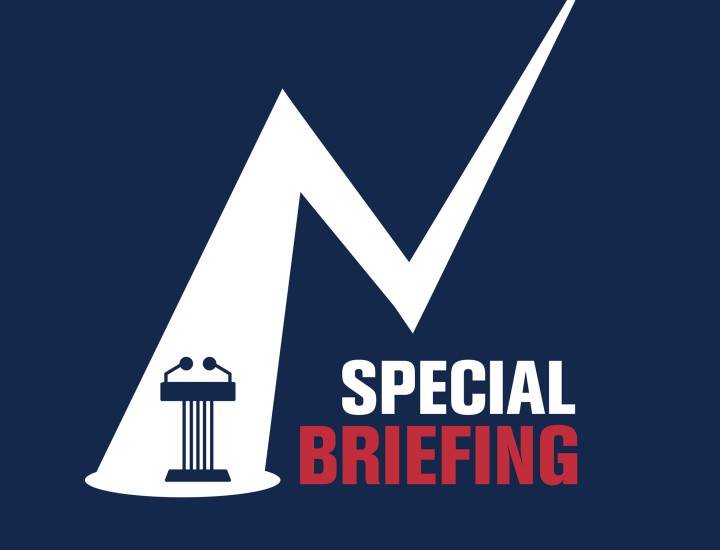Six Principles of Better Budgeting

This article was originally published in Capitol Ideas: Council of State Governments Magazine.
The beginning of fiscal year 2018 is barely four months away in all but four states—Alabama, Michigan, New York and Texas—and governors from coast to coast have started proposing budgets for the coming year. But while the U.S. economy is nearing its third-longest recovery since records began in 1857, the outlook for state revenue is less robust than almost eight years of steady gross domestic product growth might imply. Following the National Association of State Budget Officers’ observation that “weak revenue performance” in 2016 helped keep inflation-adjusted general fund spending under where it was even in the recession in 2008, The Nelson A. Rockefeller Institute of Government recently described the 2016–17 outlook for state tax collections in one word: gloomy.
The contrast between tepid revenue growth and growing spending needs, especially for Medicaid and pension payments, suggests that states will resort—as they often do—to balancing their budgets by using one-time solutions and other techniques that shift the cost of current expenditures to the next generation of taxpayers or beyond.
Such behavior, while sometimes unavoidable in times of fiscal crisis, should be avoided routinely, both as an issue of transparency as well as the more profound one of intergenerational equity—the principle that today’s recurring costs should be funded with today’s recurring revenue sources. States and municipalities generally use cash budgeting techniques rather than accrual methods used in their own comprehensive annual financial reports as well as those of corporations. The New York State Comptroller’s Office’s Accounting and Reporting Manual, states that “under the cash basis of accounting, revenues and expenditures are recognized as cash is received and disbursed.” By contrast, in accrual-basis accounting, “most transactions are recorded when they occur, regardless of when cash is received or disbursed.” A common variant of this known as modified accrual is also used. The state of Washington’s State Administrative and Accounting Manual, or SAAM, published by Washington’s Office of Financial Management, advises that under modified accrual, “revenues are considered available when they will be collected either during the current period or soon enough after the end of the period to pay current year liabilities,” while expenditures are generally recognized when the fund liability is incurred, if measurable.”
Given the variety of choices available to officials, it is no wonder that the very definition of a “balanced budget” can vary from state to state, even though balance is the law of the land in 49 of the 50. (The lone exception, Vermont, follows the example of its peers although it is not required to do so by statute.)
One-time actions can make state finances more difficult to sustain as debt increases.
Illinois, for example, has been unable to enact an annual budget since 2015 and exists from month to month on an unstable mixture of continuing spending deals, underfunding public-worker pensions and delaying payments on almost $12 billion in vendor bills as of late February 2017.
To help create a roadmap for more responsible fiscal practices across the U.S., the Volcker Alliance, in the 2015 report Truth and Integrity in State Budgeting: Lessons from Three States, scrutinized the finances of California, New Jersey and Virginia and set out these six principles of better budgeting:
- Complete budgetary information, including how balance was achieved and whether one-time revenue sources were tapped, should be easier to find and interpret.
- Short-term revenue forecasts should be transparent and supportable by historic growth trends. Past projections should be assessed for accuracy to help improve forecasting methods.
- Recurring costs should be paid with recurring revenue.
- The proceeds of borrowings should not be used to cover operating expenses.
- States should move away from strictly cash budgeting and toward the type of accounting, used in their audited comprehensive annual financial reports, that shows the true present value of future spending obligations.
- States must build rainy day funds to safeguard essential services during economic down-turns. The size of the funds should be adjusted for revenue volatility, and they should be replenished consistently after they are tapped.
The Volcker Alliance, a New York-based nonprofit organization, was established in 2013 by former Federal Reserve Chairman Paul A. Volcker with a mission to address the challenge of effective execution of public policies and to help rebuild public trust in government.
Truth and Integrity in State Budgeting built on the work of the State Budget Crisis Task Force, co-chaired by Mr. Volcker and Alliance Director Richard Ravitch, and the Volcker Alliance is now applying its six fiscal principles to an examination of the transparency and sustainability of all 50 states’ budgets for the fiscal years of 2015, 2016 and 2017.
This research on the state budgets is being conducted by public finance professors and graduate students at 13 universities and campus-based policy institutes, along with experts at Municipal Market Analytics Inc., an independent financial consulting firm, and Katherine Barrett and Richard Greene, senior fellows at The Council of State Governments as well as longtime budget-watchers for the Pew Charitable Trusts, Governing magazine and the Volcker Alliance. We anticipate publishing periodic assessments of the states’ budget practices starting later this year, with updates in 2018 and 2019.
“Trust in government is at a low point,” Mr. Volcker said when the 50-state project made its official debut in October 2016. “Part of the reason is that the public cannot even tell what our government can afford. Accounting may be complicated, but governments have an obligation to the public to reveal what services cost, how much money is borrowed, where there are shortfalls, and what tradeoffs society will face to balance the budget. This project aims to show the way.”
To compare budget practices across America, Volcker Alliance researchers are asking a common set of questions in each state, including how revenues and expenditures are estimated; the use of one-time solutions to balance budgets; whether states are making their full, actuarially determined payments for pensions and other post-employment benefits, (known as OPEBs and consisting largely of retiree health care costs); and how well states are disclosing budget and related fiscal information to the public, including the use of tax abatements and other exemptions and the estimated cost of repairing infrastructure. To collect the data, the teams are examining documents including enacted and revised budgets and supplementary documents, comprehensive annual financial reports, legislative research reports and official statements for municipal bond issues. Preliminary results of the inquiry have shown some broad use of best practices as well as several instances of those that could use improvement.
Among our findings for fiscal 2016, for example, are:
- About a third of the 31 states for which preliminary data are available needed to make meaningful adjustments in their enacted budgets during the fiscal year.
- While closing general fund deficits by selling debt was extremely rare, a few states did use the proceeds of bond premiums as a source of current funds. (In this technique, an issuer sells a bond for more than par value, treating the amount over par as if it were revenue.)
- About a third of the states also failed to make the full actuarially determined or required payment for public-employee pensions, creating or adding to a debt that will need to be repaid in the future if promised benefits are to be maintained.
- Most states failed to make their actuarially determined payment for OPEB, where such benefits are offered, continuing a longtime trend of governments financing this item on a pay-as-you-go basis.
Forecasting revenues and expenditures is another area in need of improvement. Only 15 of the 31 states we tracked in fiscal year 2016 disclosed consensus revenue estimates in budget documents.
While consensus estimates do not guarantee accurate forecasts, the Rockefeller Institute of Government and the Pew Charitable Trusts, among others, have found that a governor, lawmakers and other parties agreeing on a single figure can remove revenue estimates from politics and allow leaders to focus more attention on the best ways to allocate available resources.
We also found that while about half of the 31 states disclose revenue estimates for at least three years into the future, only a third publish similar forecasts for expenditures. While such estimates are always subject to revision—and should be—they can provide important early signals of potential fiscal upturns or stresses and help guide policy for the use and replenishment of rainy day funds and other fiscal reserves. Indeed, almost all the states we have surveyed so far have formal policies for replenishing rainy day funds after they have been tapped, although many still don’t adjust the size of the reserves for swings in revenue, an increasing concern with tax revenue becoming more volatile than state GDP growth since the early 2000s, according to the Rockefeller Institute.
With President Donald Trump and U.S. Senate Democrats both proposing infrastructure spending plans that could reach $1 trillion, it is critical for citizens to know more about the health of their roads, bridges, buildings and other infrastructure and what it might cost to get them to a state of good repair. California’s 2017 infrastructure report provides a model of transparency in this field, proposing $43 billion to fix infrastructure over five years and estimating the state’s deferred-maintenance tab at $78 billion. But only a handful of the states we have tracked disclose similar information. With the Federal Highway Administration estimating it will cost $46 billion just to replace the nation’s structurally deficient bridges, states that declare budgets in balance without a nod to their long-term obligations for infrastructure renewal are choosing to push at least some of today’s costs to tomorrow’s taxpayers. In infrastructure and other critical areas, cost-shifting is something states should strive to avoid.
Noah Winn-Ritzenberg, senior program associate, contributed research for this article.


